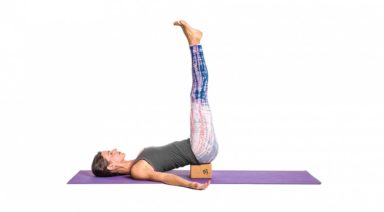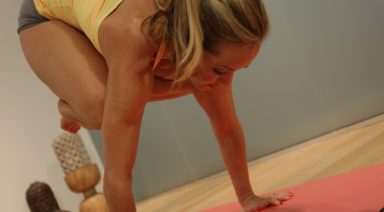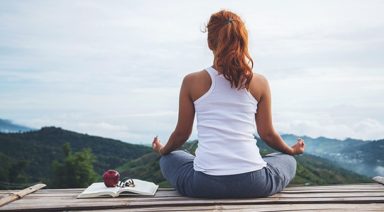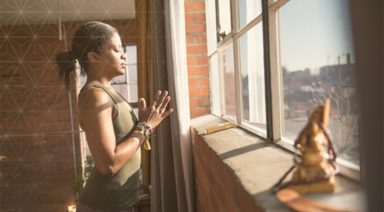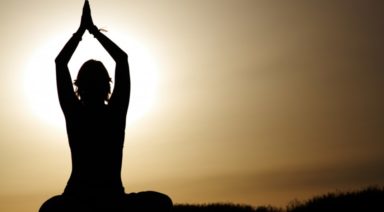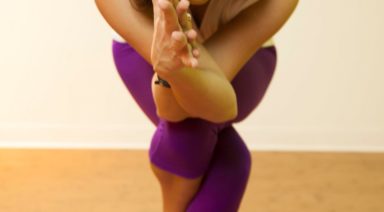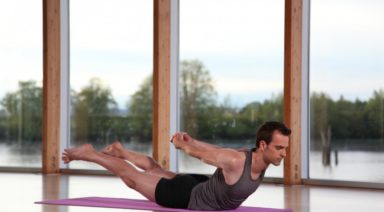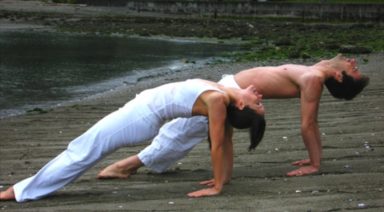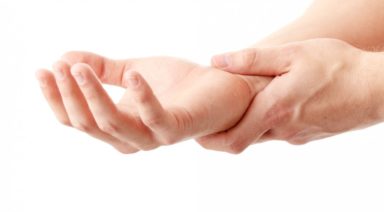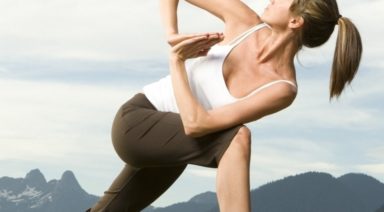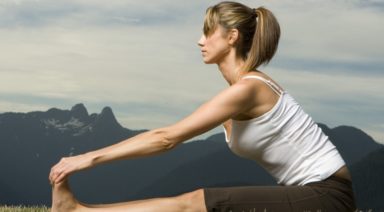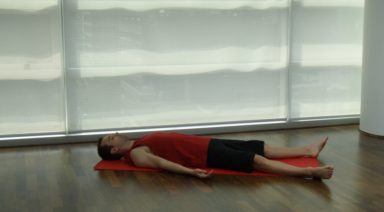Prasarita Padottanasana: Standing Wide-Legged Forward Bend Pose
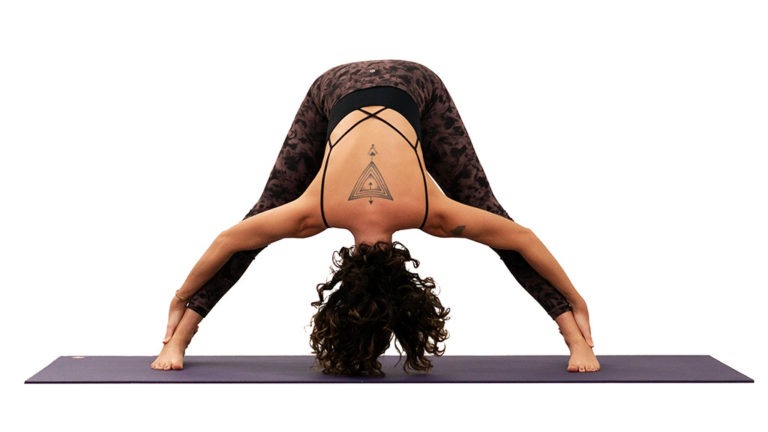
ADJUSTMENTS | BENEFITS | SEQUENCING | SANSKRIT | STEPS
Prasarita padottanasana (pra-sa-REE-tah pah-doh-tahn-AHS-an-uh) is a big stretch for the hamstrings and inner leg line. With many variations available, this pose is accessible for most practitioners. This is also a great pose in lieu of headstand.
Philosophy + Origin
Prasarita padottanasana has found its way into almost every style of yoga. B.K.S. Iyengar taught several variations of this posture, labeling them as A, B, C, and D. The most commonly practiced variation is prasarita padottanasana A. Prasarita padottanasana B is when the hands are on the hips and the head is lifted off the ground, not resting on the mat. Prasarita padottanasana C is the variation where the hands are interlaced and stretched behind the back and over the head as you fold. In the final variation taught by Iyengar, prasarita padottanasana D asks the student to grasp the big toe on each foot.
ADJUSTMENTS/MODIFICATIONS:
- Place a pillow, bolster, or chair under your head to bring the ground closer to you.
- Option to place blocks or a chair under your hands.
STEP-BY-STEP:
- Begin standing facing the long edge of your mat. Step your feet about four feet apart (it will vary slightly depending on your height) and place your hands on your hips. Look to your feet and check that your middle toes are facing the same direction.
- Lift your kneecaps up to engage your thigh muscles. As you inhale, extend through your chest. As you exhale, begin to hinge forward from your hip creases, keeping the front of your torso long.
- Pause when you find your torso parallel with the floor. Press your fingertips firmly into the floor, hands directly below the shoulders. Straighten your arms so that they are parallel to the floor, just like your legs.
- Keep the torso long and start to walk your fingertips back toward your legs so that they are between your feet. Bend your elbows and allow your torso and head to drop into a full forward bend. If accessible, place the crown of your head on the floor between your feet.
- Use the palms of your hands to press into the floor. If your body allows, continue to move your hands back, fingers facing forward, until your upper arms (triceps and biceps) are parallel with the mat. Allow the breath to broaden your shoulder blades as you encourage your shoulders to lift away from your ears.
- Hold this pose for up to 60 seconds. When you’re ready to release, walk your hands forward so that they are under your shoulders and your torso is once again parallel with the floor. Use an inhale to lift up completely, hands on hips. Return to standing.
PREPARATORY POSES:
- Downward-facing dog | Adho mukha svanasana
- Goddess pose | Utkata konasana
- Frog pose | Mandukasana
SEQUENTIAL POSES:
- Seated wide-legged forward bend | Upavista konasana
- Extended side angle | Utthita parsvakonasana
- Firefly pose | Titibhasana
COUNTER POSES:
- Half lord of the fishes | Ardha matsyendrasana
- Half pigeon pose | Eka pada rajakapotasana
BENEFITS:
- Strengthens legs and back.
- Stretches groins, hamstrings, and hips.
SANSKRIT:
- Prasarita = stretched, expanded
- Pada = foot
- Ut = intense
- Tan = to extend
- Asana = pose
Legal Disclaimer Before participating in any exercise program or using any fitness products or services that may be described and/or made accessible in or through the Gaia Website and/or the Services, you should consult with a physician or other healthcare provider. Read more about Gaia’s Terms Of Use.
Vrksasana: Tree Pose

ADJUSTMENTS | BENEFITS | SEQUENCING | SANSKRIT | STEPS
Vrksasana (vrik-SHAHS-ah-nah) is a deceptively challenging pose. While at first glance tree pose may seem easy, the combination of strength, balance, and flexibility required can take lots of practice. Never fear, props like a wall or a chair can come in handy while finding the balance point of the pose, and there are plenty of variations to fit everyone’s practice. This is a great pose to practice dristi (focused gaze) to help with balance.
Philosophy + Origin
In many Indian traditions, trees, specifically the ashoka tree, are symbols of love and devotion. Many cultures seek the knowledge of trees for healing, searching their branches, trunks, leaves, and roots for powerful medicine. Patient by nature, trees are quiet and steady, living their long lives in rhythm with the seasons and the circadian rhythm of the world. In Indian literature, trees often make appearances as sacred symbols of the universe, a bridge between creator and individual.





